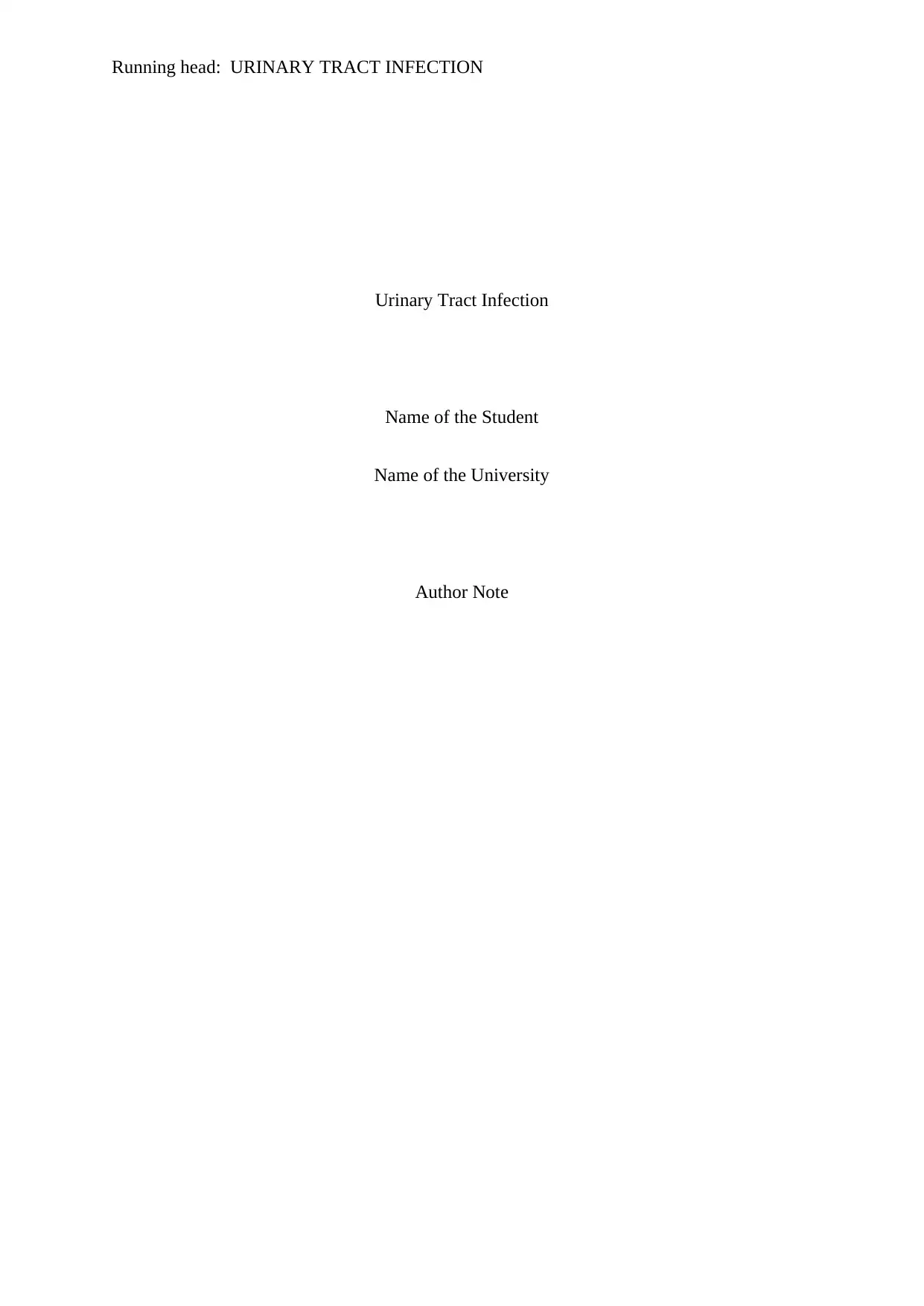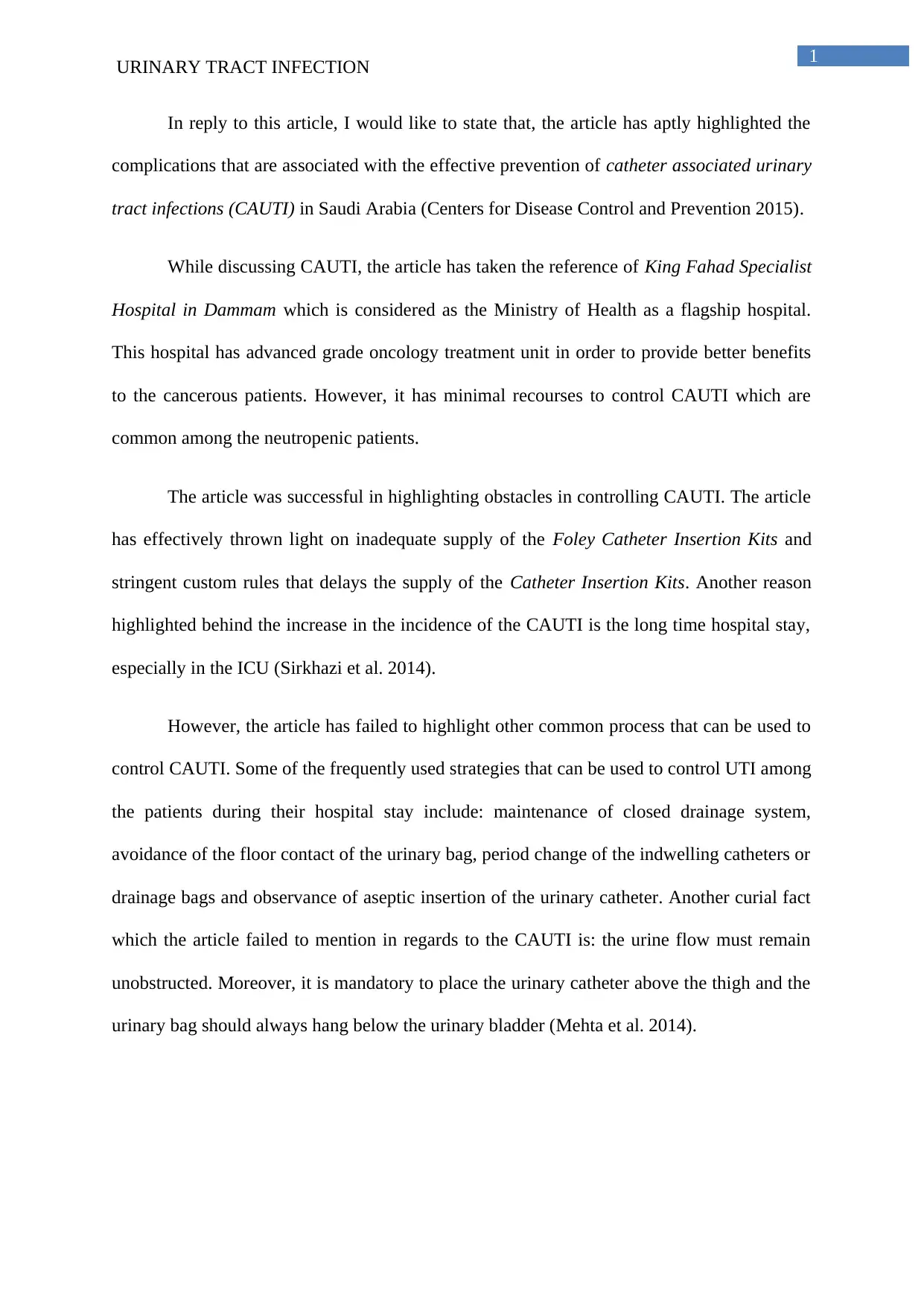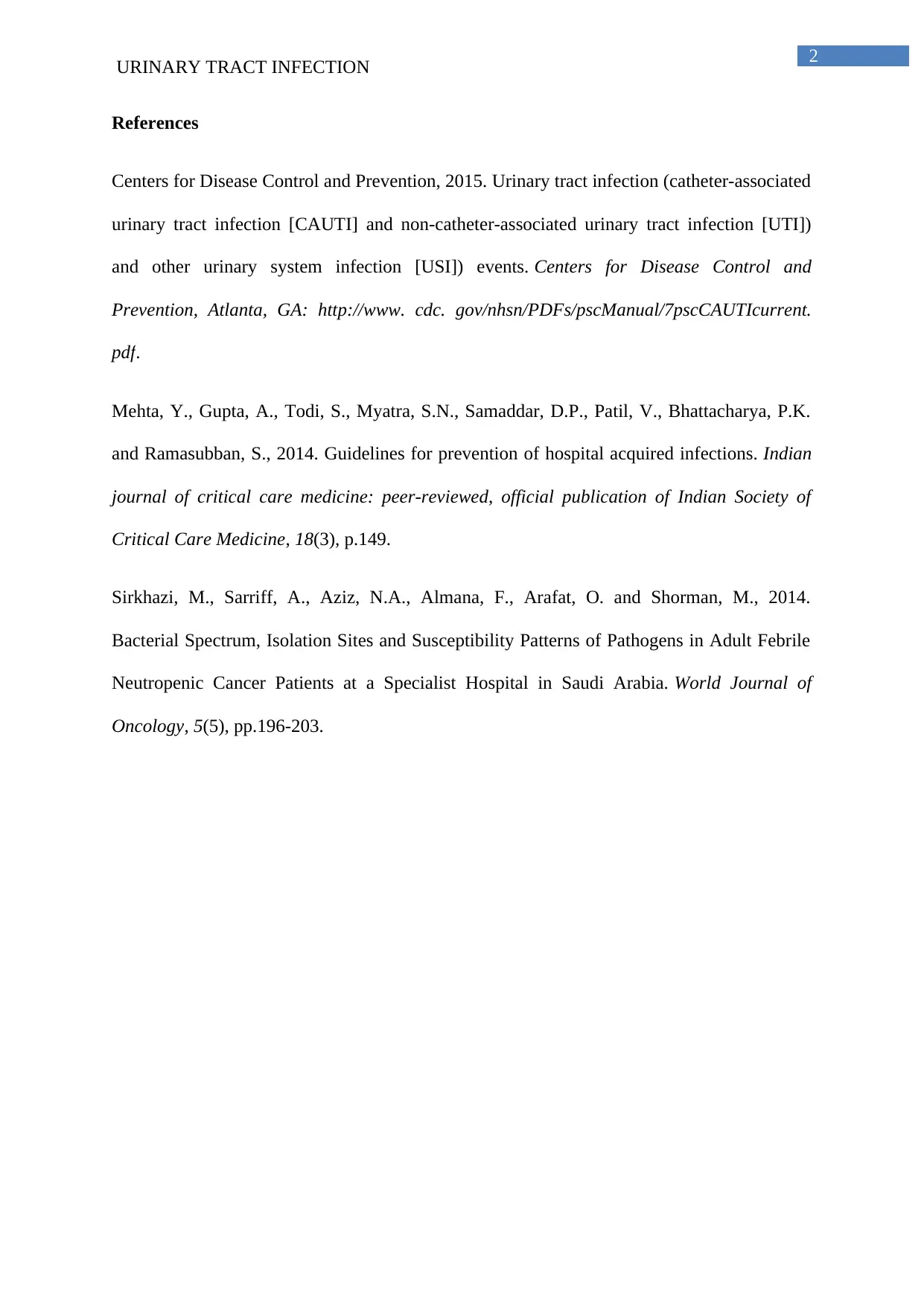Urinary Tract Infection Report: CAUTI and Prevention
VerifiedAdded on 2020/04/15
|3
|533
|180
Report
AI Summary
This report provides an analysis of urinary tract infections (UTIs), specifically focusing on catheter-associated urinary tract infections (CAUTI). It examines the challenges in controlling CAUTI, referencing the King Fahad Specialist Hospital in Dammam and highlighting issues such as inadequate supplies of Foley Catheter Insertion Kits and prolonged hospital stays, particularly in the ICU. The report also discusses the importance of maintaining a closed drainage system, avoiding floor contact of the urinary bag, timely changes of indwelling catheters, and aseptic insertion of urinary catheters. It emphasizes the need for unobstructed urine flow and the correct positioning of the urinary catheter and bag to prevent infections. The report references relevant literature, including guidelines for the prevention of hospital-acquired infections and studies on bacterial spectrum and susceptibility patterns in neutropenic cancer patients.
1 out of 3









![[object Object]](/_next/static/media/star-bottom.7253800d.svg)